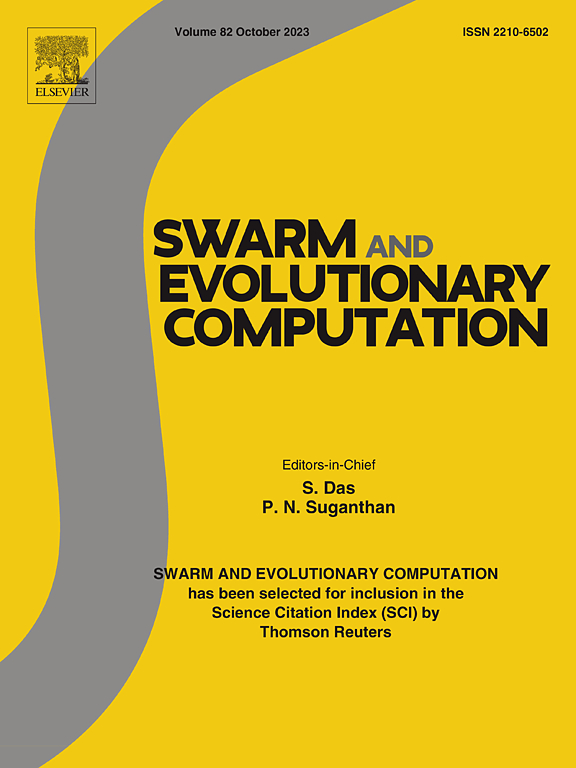Multi-objective optimization-assisted single-objective differential evolution by reinforcement learning
IF 8.2
1区 计算机科学
Q1 COMPUTER SCIENCE, ARTIFICIAL INTELLIGENCE
引用次数: 0
Abstract
“Learning to optimize” design systems for evolutionary algorithm (EA) automatic design have become a trend, especially for differential evolution (DE). “Learning to optimize” design systems for EAs have two main parts: an excellent “backbone” algorithm with learnable components, and a learning scheme to determine the components of the “backbone” algorithm. A good “backbone” algorithm is of great importance for the algorithm design, because it determines the algorithm design space and potential. The learning scheme determines whether we can realize the potential or not. Existing studies generally choose one developed EA as the “backbone” algorithm, which constrains the potential of the design system because the “backbone” algorithm is relatively simple. To solve the problem and design a good EA, in this paper, we first propose a three-stage hybrid DE framework for single objective optimization, called SMS-DE, which implements single-objective DE, multi-objective DE, and single-objective DE sequentially. The multi-objective DE aims to enhance exploration ability. Second, we apply the framework to two advanced DEs, JADE and LSHADE, which results in two new algorithms: SMS-JADE and SMS-LSHADE. Third, the newly proposed algorithm, SMS-LSHADE, is considered the “backbone” algorithm, and the reinforcement learning method (Q-learning) is used to control the parameter for allocating computational resources to each stage, which results in another algorithm called QSMS-LSHADE. Experimental results on the CEC 2018 test suite show that SMS-DE, SMS-JADE, and SMS-LSHADE can perform significantly better than their counterparts and that SMS-QLSHADE performs the best among many developed DEs.
求助全文
约1分钟内获得全文
求助全文
来源期刊

Swarm and Evolutionary Computation
COMPUTER SCIENCE, ARTIFICIAL INTELLIGENCEC-COMPUTER SCIENCE, THEORY & METHODS
CiteScore
16.00
自引率
12.00%
发文量
169
期刊介绍:
Swarm and Evolutionary Computation is a pioneering peer-reviewed journal focused on the latest research and advancements in nature-inspired intelligent computation using swarm and evolutionary algorithms. It covers theoretical, experimental, and practical aspects of these paradigms and their hybrids, promoting interdisciplinary research. The journal prioritizes the publication of high-quality, original articles that push the boundaries of evolutionary computation and swarm intelligence. Additionally, it welcomes survey papers on current topics and novel applications. Topics of interest include but are not limited to: Genetic Algorithms, and Genetic Programming, Evolution Strategies, and Evolutionary Programming, Differential Evolution, Artificial Immune Systems, Particle Swarms, Ant Colony, Bacterial Foraging, Artificial Bees, Fireflies Algorithm, Harmony Search, Artificial Life, Digital Organisms, Estimation of Distribution Algorithms, Stochastic Diffusion Search, Quantum Computing, Nano Computing, Membrane Computing, Human-centric Computing, Hybridization of Algorithms, Memetic Computing, Autonomic Computing, Self-organizing systems, Combinatorial, Discrete, Binary, Constrained, Multi-objective, Multi-modal, Dynamic, and Large-scale Optimization.
 求助内容:
求助内容: 应助结果提醒方式:
应助结果提醒方式:


